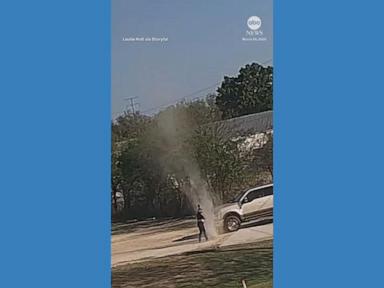Researchers have identified “forever chemicals” in household dust nearby a North Carolina factory — indicating that dust may be an additional source of exposure to these compounds.
The homes, located in southern North Carolina’s Cumberland and Bladen counties, are in the vicinity of the Fayetteville Works fluorochemical manufacturing facility, which has been a known source of contamination in the area’s Cape Fear River Basin.
The chemicals in question are part of a massive group of substances called per- and polyfluoroalkyl substances (PFAS), which are found in a variety of consumer goods, certain firefighting foams and industrial waste.
Some types of PFAS, which are notorious for their persistence in the body and in the environment, are linked to cancers and other serious illnesses.
Ingestion of PFAS via groundwater has now been studied for years, but scientists are beginning to look at dust as a potential exposure source.
“PFAS exposure via contaminated well water is relatively well studied,” senior author Nadine Kotlarz, an assistant professor in the civil, construction and environmental engineering department at North Carolina State University, said in a statement.
“But, given the air emissions from the plant, we wanted to learn whether household dust was also a source of exposure,” added Kotlarz, who is also a member of the university’s Center for Human Health and the Environment.
Kotlarz and her colleagues measured the concentrations of 48 types of PFAS in settled dust samples from 65 homes that participated in the institution’s broader GenX Exposure Study.
While that study was named for a particular kind of PFAS released for years into the river — called GenX — the project has involved numerous other types of the compounds as well.
As for the dust measurements — reported in a study released Monday — the scientists found that eight types of PFAS were detected in more than 90 percent of the samples they took.
Every dust sample had at least one PFAS detected, and GenX was present in 89 percent of the samples, according to the study published in Environmental Science & Technology.
The authors were particularly interested in a category of PFAS called polyfluoroalkyl ether acids (PFEAs), which include GenX.
They found that seven of the 12 PFEAs they evaluated were present in more than 75 percent of the samples.
Dust concentrations of six kinds of PFEAs, including GenX, decreased considerably as residential distance from the fluorochemical plant increased.
The researchers also identified the presence of another compound called trifluoroacetic acid (TFA) in 89 percent of the dust samples.
TFA, they explained, is “an ultrashort chain PFAS,” or a kind of PFAS that has fewer than three carbons and easily evades today’s water filtration systems.
While scientists generally consider TFA to be a type of PFAS, the compound is not officially defined as such in the United States or Europe.
The European Food Safety Authority notes that TFA “forms during the breakdown of PFAS.”
Regardless of the substance’s official PFAS status, its tiny and transportable traits have raised alarms among scientists and utility managers.
As a result, co-author Jane Hoppin, a professor of biological sciences at NC State, stressed in a statement the importance of identifying the sources of TFA and other ultrashort ...












